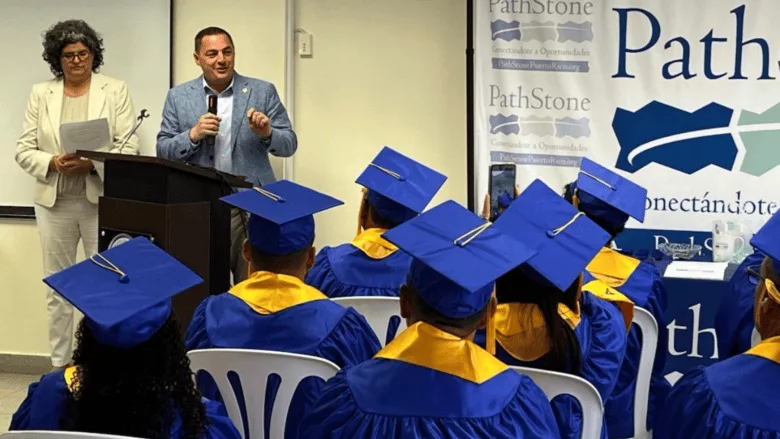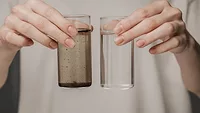What is Brownfields Week and Why Does it Matter?
The events supported the EPA’s mission of ensuring clean land, air and water to the public.

Image Courtesy of the EPA
The U.S. Environmental Protection Agency (EPA) concluded its Caribbean Brownfields Week with a powerful message: environmental restoration isn’t just about cleaning up — it’s about transforming lives, rebuilding economies, and safeguarding public health.
What is it? Brownfields Week is an EPA-led initiative that highlights efforts to clean up and redevelop contaminated properties, turning them into safe, usable spaces while creating jobs and revitalizing communities. It's called Brownfields Week because it focuses on the EPA’s Brownfields Program, which targets the assessment, cleanup, and revitalization of brownfield sites—properties where reuse is complicated by the presence or potential presence of hazardous substances, pollutants, or contaminants.
The EPA's Brownfields Program was officially launched in 1995, building upon earlier pilot initiatives that began in 1993. Since its inception, the program has provided nearly $2.9 billion in grants to assess and clean up contaminated properties, facilitating their return to productive use.
Last week, EPA Region 2 Administrator Michael Martucci led a weeklong tour across Puerto Rico, spotlighting federal investments in brownfields redevelopment, environmental job training, and critical restoration projects that directly benefit communities.
Where? The visit included stops in San Juan, Camuy, Arecibo, Barceloneta, Naranjito, and the U.S. Virgin Islands, where EPA hosted job training forums, community engagement events, and technical workshops. These events emphasized the transformative potential of turning contaminated and abandoned properties into productive community spaces while equipping residents with the skills to take part in this work.
“The Brownfields program changes communities and changes lives,” said Regional Administrator Martucci. “Working together with community leaders, municipalities, and nonprofits, we’re not just cleaning up—we’re building stronger economies and healthier neighborhoods.”
One of the most pressing issues in the region is the high number of vacant housing units—over 255,000 in Puerto Rico and more than 7,000 in the U.S. Virgin Islands. Brownfields funding helps repurpose these spaces into homes, businesses, and public resources.
In Naranjito, Martucci reviewed the impact of a $300,000 Brownfields grant that helped transform a former gas station into a wastewater pump station and a defunct theater into a community resource center. A new $1 million grant awarded in 2024 will expand redevelopment to other sites in the Mountain District.
Workforce Development and Environmental Careers
A key element of the week was EPA’s focus on job training. At a Brownfields Job Training Program graduation ceremony, Martucci celebrated the achievements of residents trained in site remediation, environmental monitoring, and infrastructure restoration. These programs provide local workers access to well-paying, sustainable careers in the environmental sector.
Job training forums and workshops throughout the week educated community members and organizations on how to access EPA funding and technical assistance.
The trip also included high-level policy discussions. Martucci met with Puerto Rico Governor Jenniffer González Colón, the island’s Energy Czar, and LUMA Energy leadership to address energy infrastructure needs. They discussed streamlining permitting processes while maintaining robust environmental safeguards — a key balance for Puerto Rico’s modernization efforts.
Environmental restoration projects were also in the spotlight. In Camuy, Martucci visited Finca Nolla, a restored coastal dune reserve supported by EPA funds, offering both ecological preservation and community access.
In a major development, Martucci joined local leaders and federal agencies to break ground on the $14.7 million Caño Martín Peña Ecosystem Restoration Project in San Juan. This effort will restore tidal flow, reduce flooding, and improve water quality for 27,000 nearby residents.
The week concluded with a boat tour of the San Juan Bay Estuary, where Martucci met with the San Juan Bay Estuary Partnership and the U.S. Army Corps of Engineers to plan restoration of the polluted Juan Méndez Creek, a critical part of the region’s watershed.
In Arecibo, Martucci addressed local concerns by touring the municipal landfill and stormwater pump station. He met with residents who raised issues about odor, pollution, and environmental compliance. EPA reaffirmed its commitment to work alongside Puerto Rico’s Department of Natural and Environmental Resources to ensure accountability and enforcement.
Why It Matters
For everyday citizens, the EPA’s Brownfields work represents more than cleanup—it’s about reclaiming community spaces, creating safer neighborhoods, and opening doors to new job opportunities. Whether it’s a repurposed theater in Naranjito or cleaner waters in San Juan, these projects deliver visible, lasting impact.
For industries like environmental drilling, remediation, and engineering, the increased funding and activity in Brownfields redevelopment means growth in contracts, demand for skilled labor, and expanded collaboration with federal and local governments. As green infrastructure and climate resilience take center stage, these sectors are crucial players in the environmental comeback.
Looking for a reprint of this article?
From high-res PDFs to custom plaques, order your copy today!



.webp?height=200&t=1761182710&width=200)


